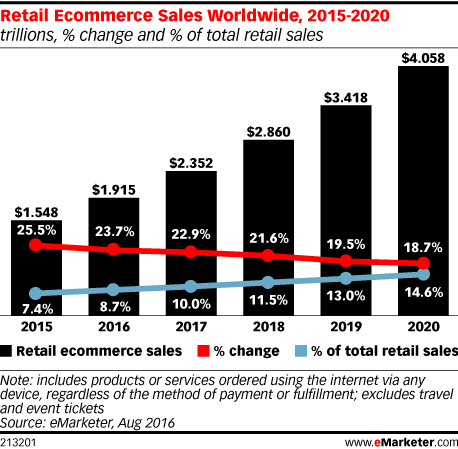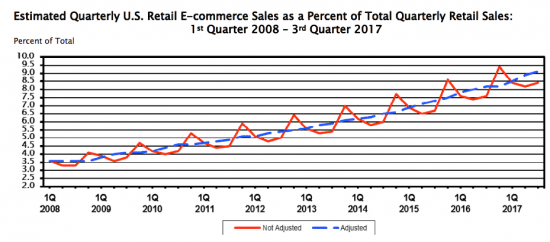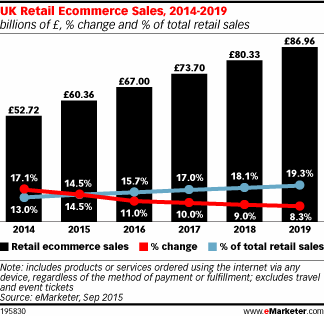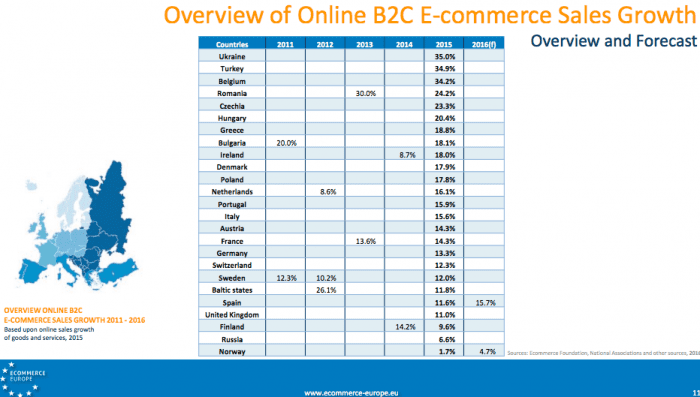The potential for online retail growth on desktop and mobile devices
It’s interesting to look back at the growth of online sales and think forward to how much further they can grow at the expense of traditional channels. Overall percentage of Ecommerce retail sales are perhaps, surprisingly small at around 9% of sales in the US and 17% in the UK, but with sustained growth.
We will keep this research updated through 2018 as new research becomes available.
December 2017 update – new worldwide sales forecasts from eMarketer
The latest ecommerce growth forecast from eMarketer is that ecommerce sales will increase 23.2% in 2017. It will account for one-tenth of total retail sales.
Total retail sales will reach $22.737 trillion by the end of this year, up 5.8% from 2016. This projection shows the growth in digital buyers. The declining percentage change shows that growth rates for ecommerce are declining, although they are still positive.
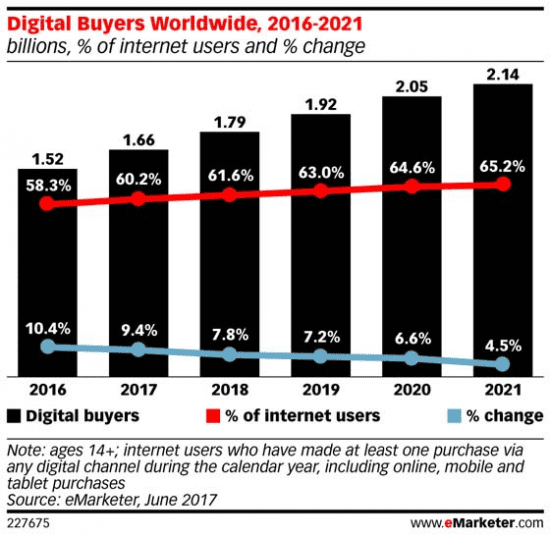
The latest eMarketer data on growth is only available to their paid subscribers. This 2016 summary of projected sales from eMarketer shows that retail ecommerce sales will increase to $4.058 trillion in 2020, making up 14.6% of total retail spending.
US E-commerce sales – December 2017 update
The US Government has been cataloguing the trend of percentage of ecommerce sales since the first edition of my book was published and you see there has been steady growth since. Although the overall percentage of sales is not as high as might be expected.
US E-commerce sales currently average out at 9.1 percent of total sales
December 2017 update – Retail reseearch centre
The Online Retailing: Britain, Europe, US and Canada 2017 research report from the Centre for Retail Research shows that the retail online retail sector is the main driver of growth in European and North American retailing, achieving in Europe growth rates of 18.2% (in 2015), 15.6% (2016), and expected increases in 2017 of 14.2% and 13.8% in 2018.
Here is their summary:
The countries with the highest online shares of their internal markets are: the UK (17.8% forecast for 2017); Germany (15.1% for 2017); and France (10.0% forecast for 2017). Other countries with high market shares are Sweden and The Netherlands. Germany has had the fastest-growing online sector for the last few years, but in 2017 its 16.4% forecast growth will be exceeded by Spain (+19.2%), Poland (17.2%) and Netherlands (17.0%).
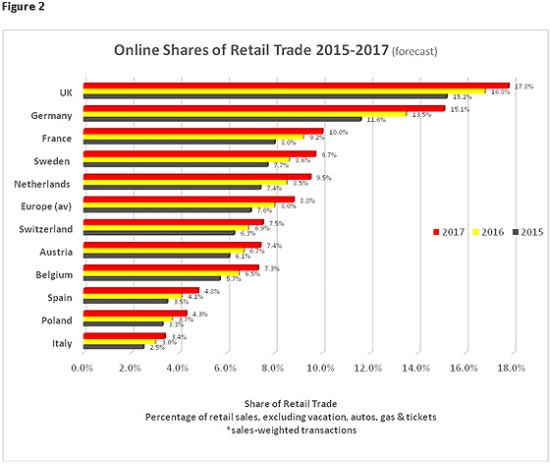
September 2015 update – new UK Ecommerce predictions from Emarketer
These charts from eMarketer give a great visual summary of UK retail Ecommerce sales growth predictions. Although growth rates are declining, they will remain around 10% for next two years with total online retail sales reaching 19.3% by 2019 according to the prediction. Updated projections are only now available to eMarketer Pro subscribers.
Another chart shows the need to focus on improving mobile ecommerce experiences. The report splits out mobile commerce sales which are already responsible for one third of online Ecommerce sales. The higher growth rates for mobile commerce are striking – currently around 38%.
A more recent projection of UK smartphone sales show that in 2018 more than half of sales will be online, but this is not likely to increase dramatically as it has previously. In 5 years, in 2021 the percentage of mcommerce sales will be 56% showing the ongoing importance of desktop experiences and providing cross-device experiences.
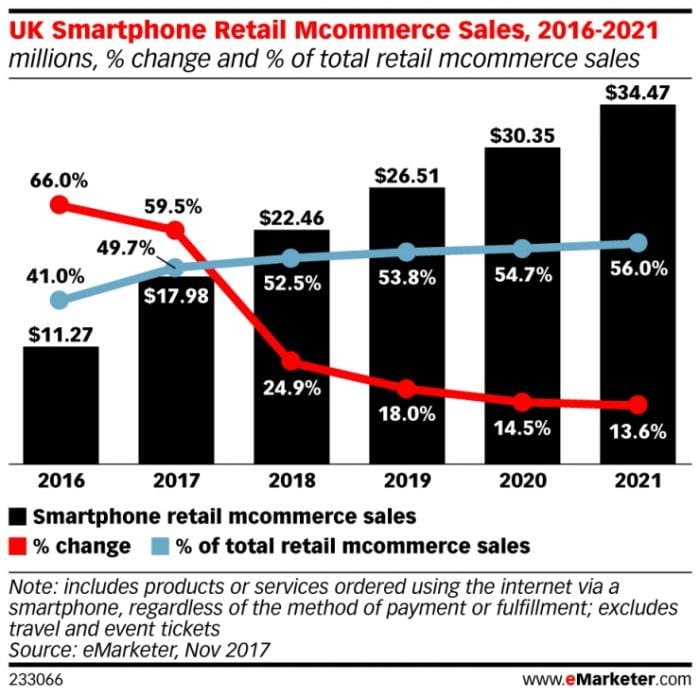
Remember that, as our compilation of desktop vs smartphone conversion rates shows, conversion rates are significantly lower on smartphones, so the mobile ecommerce experience should also signpost customer journeys that involve purchase via other online and offline channels.
E-commerce sales growth in Europe
Previous estimates by Forrester are no longer updated, but a good alternative source is the E-commerceWiki (free registration) which is an initiative of the Ecommerce Foundation, a non-profit organization, initiated by worldwide national E-commerce associations.
This shows these growth rates in their most recent report with mature countries in the range 10 to 15% but 15% + in less mature countries.

